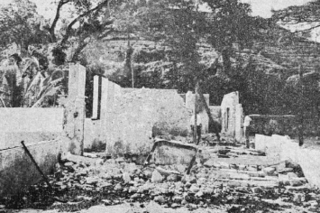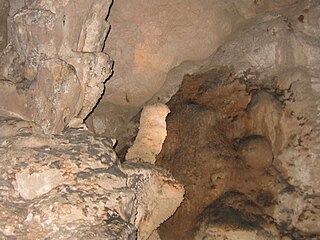 W
WThe 1971 Sudanese coup d'état was a short-lived communist-backed coup, led by Major Hashem al Atta, against the government of President Gaafar Nimeiry. The coup took place on 19 July 1971, toppling the government of the Democratic Republic of the Sudan, but failed to garner support either domestically or internationally. After several days Nimeiry loyalists launched a counter-coup, freeing Nimeiry and toppling Atta's government.
 W
WThe 1982 Amol uprising was an armed uprising against the government of Iran by the Maoist organisation Union of Iranian Communists (Sarbedaran).
 W
WThe 1987–1989 JVP insurrection, also known as the 1988–1989 revolt or the JVP troubles, was an armed revolt led by the Marxist Janatha Vimukthi Peramuna against the Government of Sri Lanka, which was led by President J. R. Jayewardene. The revolt, like a preceding insurgency which took place in 1971, was unsuccessful. The insurrection was a low-intensity conflict that lasted from April 1987 to December 1989. The JVP resorted to subversion, assassinations, raids, and attacks on military and civilian targets while the Sri Lankan government reacted through counter-insurgency operations to suppress the revolt.
 W
WThe Araguaia guerrilla was an armed movement in Brazil against its military government, active between 1967-1974 in the Araguaia river basin. It was founded by militants of the Communist Party of Brazil, the then Maoist counterpart to the Brazilian Communist Party (PCB), which aimed at establishing a rural stronghold from whence to wage a "people's war" against the Brazilian military dictatorship, which had been in power since the 1964 coup d'état. Its projected activities were based on the successful experiences led by the 26th of July Movement in the Cuban Revolution, and by the Communist Party of China during the Chinese Civil War.
 W
WThe Bender Uprising was organized by local Bolshevik groups in Bender/Tighina on 27 May 1919, as a protest of the local Russian population against the annexation of Bessarabia by the Kingdom of Romania in December 1918. Red Guards from local factories were organized under the command of Grigoriy Borisov, and were supported by 150 troops of the 3rd Brigade of the 5th Division of the 3rd Ukrainian Soviet Army. Together, the Ukrainian troops and the rebels captured the local railway station, post office and telegraph office. During that evening, however, the Romanian Army together with a unit of French colonial troops arrived at the scene and swiftly suppressed the uprising. Although many rebels fled across the Dniester River, at least 150 of them were captured and executed.
 W
WThe Colombian conflict began on May 27, 1964, and is a low-intensity asymmetric war between the government of Colombia, far-right paramilitary groups, crime syndicates, and far-left guerrilla groups such as the Revolutionary Armed Forces of Colombia (FARC), the National Liberation Army (ELN) and the Popular Liberation Army (EPL), fighting each other to increase their influence in Colombian territory. Some of the most important international contributors to the Colombian conflict include multinational corporations, the United States, Cuba, and the drug trafficking industry.
 W
WThe communist insurgency in Burma was waged primarily by the Communist Party of Burma and the Communist Party (Burma) from 1948 to 1989. The conflict ended when the CPB, severely weakened by an internal mutiny, disbanded its armed wing.
 W
WThe Communist insurgency in Malaysia, also known as the Second Malayan Emergency, was an armed conflict which occurred in Malaysia from 1968 to 1989, between the Malayan Communist Party (MCP) and Malaysian federal security forces.
 W
WThe communist insurgency in Sarawak occurred in Malaysia from 1962 to 1990, and involved the North Kalimantan Communist Party and the Malaysian Government. It was one of the two Communist insurgencies to challenge the former British colony of Malaysia during the Cold War. As with the earlier Malayan Emergency (1948–1960), the Sarawak Communist insurgents were predominantly ethnic Chinese, who opposed to British rule over Sarawak and later opposed the merger of the state into the newly created Federation of Malaysia. The insurgency was triggered by the 1962 Brunei Revolt, which had been instigated by the left-wing Brunei People's Party in opposition to the proposed formation of Malaysia.
 W
WThe ongoing communist rebellion in the Philippines is a conflict between the government of the Philippines and the New People's Army (NPA), which is the armed wing of the Marxist–Leninist–Maoist Communist Party of the Philippines (CPP). The conflict is also associated with the National Democratic Front of the Philippines (NDFP), which serves as the political wing of the CPP.
 W
WThe Communist uprising of 1935 was a military revolt led by Luís Carlos Prestes and leftist low-rank military against Getúlio Vargas's government on behalf of the National Liberation Alliance. Supported by the Brazilian Communist Party (PCB), then called the Communist Party of Brazil, and the Comintern it was the last of a series of Brazilian military uprisings which began on 1922 under the name of tenentismo or the lieutenants revolts.
 W
WThe Greek Civil War was fought between the Greek government army and the Democratic Army of Greece (DSE) – the military branch of the Communist Party of Greece (KKE) from 1946 to 1949. The fighting resulted in the defeat of the DSE by the Hellenic Army.
 W
WThe internal conflict in Peru is an ongoing armed conflict between the Government of Peru and the Maoist guerilla group Shining Path. The conflict began on 17 May 1980, and from 1982 to 1997 the Túpac Amaru Revolutionary Movement waged its own insurgency as a Marxist–Leninist rival to the Shining Path. It is estimated that there have been between 50,000 and 70,000 deaths, making it the bloodiest war in Peruvian history, since the European colonization of the country.
 W
WThe 1971 Janatha Vimukthi Peramuna (JVP) insurrection was the first of two unsuccessful armed revolts conducted by the communist Janatha Vimukthi Peramuna (JVP) against the government of Sri Lanka under Prime Minister Sirimavo Bandaranaike. The revolt began on 5 April 1971, and lasted until June of that year. The insurgents held towns and rural areas for several weeks, until the regions were recaptured by the armed forces. Although this first attempt to seize power was quickly crushed by force, in 1987 the JVP launched a stronger insurgency in the island's southern, central and western regions.
 W
WThe Ñancahuazú Guerrilla or Ejército de Liberación Nacional de Bolivia was a group of mainly Bolivian and Cuban guerrillas led by the guerrilla leader Che Guevara which was active in the Cordillera Province of Bolivia from 1966 to 1967. The group established its base camp on a farm across the Ñancahuazú river, a seasonal tributary of the Rio Grande, 250 kilometers southwest of the city of Santa Cruz de la Sierra. The guerrillas intended to work as a foco, a point of armed resistance to be used as a first step to overthrow the Bolivian government and create a socialist state. The guerrillas defeated several Bolivian patrols before they were beaten and Guevara was captured and executed. Only five guerrillas managed to survive and flee to Chile.
 W
WThe September Uprising was an armed insurgency staged in September 1923 by the Bulgarian Communist Party (BCP) under Comintern pressure and attempted to overthrow Alexander Tsankov's new government of Bulgaria that had come to power with the coup d'état of 9 June. Besides its communist base, the uprising was also supported by agrarians and anarchists. The uprising's goal was the "establishment of a government of workers and peasants" in Bulgaria.
 W
WThe communist insurgency in Thailand was a guerrilla war lasting from 1965 until 1983, fought mainly between the Communist Party of Thailand (CPT) and the government of Thailand. The war declined in 1980 following the declaration of an amnesty and by 1983 the CPT had abandoned the insurgency.